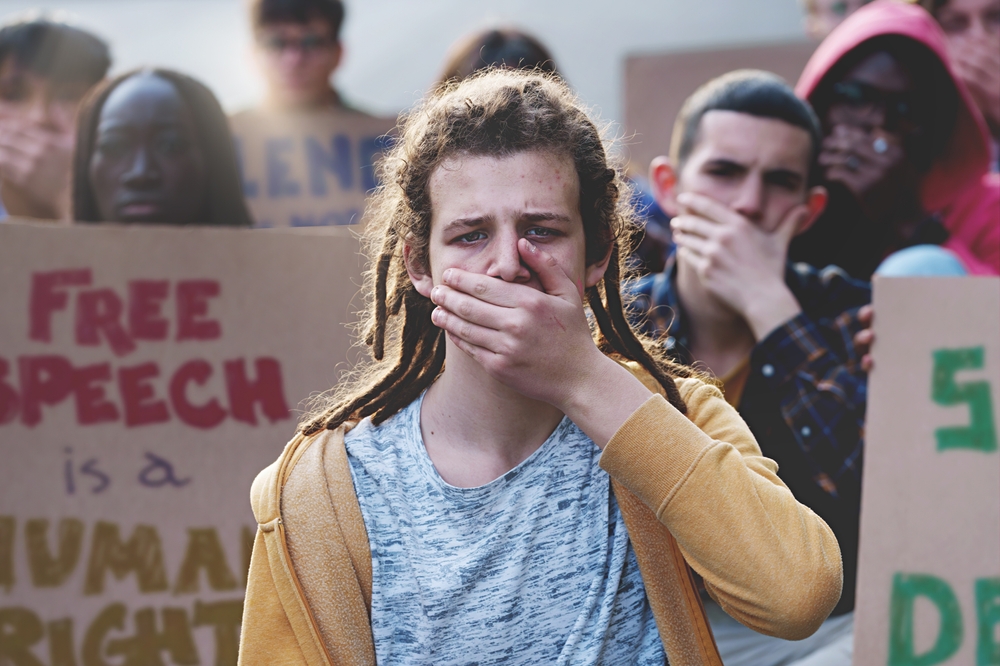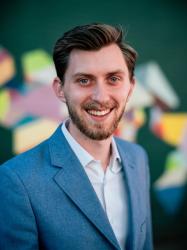At the Fine Arts Theater in Beverly Hills, I recently attended the premiere of a new documentary, co-produced by Substack and FIRE, that attempts to explain the mental health crisis facing college students in America. Interest in the topic was strong, with a lively and engaged audience of 400 who connected quickly with the ideas in the film. Afterward, the director and personalities featured in the film answered questions from the audience.
Based on Jonathan Haidt and Greg Lukianoff’s essay-turned-book, The Coddling of the American Mind profiles five students who were able to overcome various mental health challenges during their college tenure. The film frames the important problem of college students’ abysmal mental state in the context of free speech on campuses, showing that mental health is notably worse for students when they are taught to silence uncomfortable ideas and view themselves and others as emotionally fragile—in other words, when we treat people as fragile, they become so.
The gravity of this phenomenon can be seen in the significant decrease in the mental health of young people and increase in suicide and hospitalization over the past decade. Students interviewed throughout shared how they were taught to view the world as a constant threat. In a gripping extended analogy, one student shared how each perceived racial microaggression was like a knife plunging into her, leaving her exhausted after every human interaction.
This problem is vital to highlight, but by framing it solely around free speech, the film misses the underlying issue of how we are raising our kids. These alarming mental health trends exist not just in college-aged students but appear in late elementary and middle schools as well.
I have some stake in this conversation, as I recently entered the world of parenting with a now 1-year-old. I now want to know not only why free speech is threatened on campus in this cultural moment but also how we ended up with a generation of anxious, fragile kids. Contrary to the picture the film paints, of students depressed and anxious from a constant bombardment of ideas like microaggressions and speech-as-violence, the core problem begins years before students matriculate.
The majority of students profiled for the film are international students studying in the U.S. This isn’t a coincidence. During the premiere, an audience member asked the director, Ted Balaker, about the underlying reason for this. He said two themes stuck out as they interviewed students: they came from an outside perspective and were raised by families who prized debate.
I’ll take him at his word for both characteristics, but another aspect was present in the interviews. These students came from strong families with a particular viewpoint of the world, and many had a strong religious practice. These students were able to notice something wrong with the paradigm that was on offer in American universities mainly because they hadn’t experienced the same type of upbringing as many U.S. students, and had only a few years of American education. One of the native-born American students interviewed said she was able to reject the ideology around her, but only when she returned home during the COVID-19 pandemic and had time away from campus. In other words, open dialogue is only one solution to the problem of what’s happening to our kids’ mental health; the other is strong personal character born out of a certain kind of upbringing.
The average high school senior has already experienced a culture of fragility by the time he or she enters college. This is the result of a toxic mix of helicopter parenting, lack of exposure to risk, and the subsequent vacuum of opportunity to develop a strong character. This point did not go completely unacknowledged by the directors during the Q&A, but its omission from the film is notable. After the film, both Ted and Courtney Balaker acknowledged the problem of “safetyism” in parenting their own young children as a key takeaway of the film for them personally, but it wasn’t a significant part of the film’s narrative. Perhaps this is because raising children to have strong character is a much more difficult problem to solve from the outside.
Both Haidt’s and Lukianoff’s work after the original Coddling essay has delved deeper into the way children are raised pre-college. They’ve highlighted the core lessons of Cognitive Behavioral Therapy as a way to help students manage their emotional and cognitive health, for instance, by instructing them to avoid catastrophizing—i.e., focusing on the absolute best or worst outcome of a situation. It should be noted that the Coddling book went further than the essay to acknowledge the key problem of safetyism in early childhood. And Haidt’s most recent book, The Anxious Generation: How the Great Rewiring of Childhood Is Causing an Epidemic of Mental Illness, contributes yet another dimension to the issue: how kids raised by the internet do not fully develop their brains. The failure to include in the film that importantdiscovery was a missed opportunity.
Extreme behavior that plays well in the documentary—screaming at campus speakers, mental breakdowns, etc.—while deeply concerning, is a sideshow to the root issue. Certainly these problems must be addressed, especially the framing of all issues around the “isms” of race, sex, and class. But by the time students reach college, their “upbringing” is essentially over. What happened to the average student before they arrived in the college dorms? One possibility is that they had such a weak education at a young age that, when they encountered the ideas prevalent at their various universities, they immediately embraced them, having had no training in critical thinking or the benefit of questioning the basis of any status quo. A second possibility is that they were already receiving the same type of fragility conditioning during their grade school and teenage years. You don’t get a coddled generation from just four years of college.
Faculty and administrators may just be reacting to customer demand when they restrict certain types of speech. If parents started raising kids with strong character, they would be far less likely to demand censorship and I suspect that the campus free speech wars would be a non-issue. But free speech exists as a method of producing truth and depends on the character of those within that framework. This freedom stems from the inviolability of human conscience, but must be oriented toward truth—open debate does not happen in a vacuum; rather, it should be a catalyst. This ecosystem of dialogue depends not just on laws and rules but also on the character of those interacting within it.
We need to explore exactly how parents can move away from a model of fragility. Numerous barriers exist. Since the rise of “parenting styles” in the 1960s, we don’t raise children in community. No longer can you—a conscious adult—tell off someone else’s kid for biting your kid on the playground for fear his mom may be offended that you imposed your “parenting style” on her progeny. Raising kids in community, however, would allow them to experience free play within the boundaries of other parents’ guidance, which would curb the worst behavior.
We also have an irrational fear of abduction by strangers, which is extremely rare. Some parents even fear being accused of neglect by letting their children play unattended. In addition, too often parents lean on their children’s successes to prop up their own sense of self, so allowing them to fail is not an option. We can claim or intend to raise our children differently, but given these real barriers, actually doing so is much more difficult.
I was troubled by some of the audience reaction to the film during the premiere. When some students described the ideas they encountered, whether perceived microaggressions or speech they felt needed to be shut down, the audience often responded with laughter. Certainly some of the ideas are laughable, but the actual world these students experience through their conditioned lenses is terrifying, if a bit foolish to us.
The audience reaction highlights the core problem with framing the narrative around the campus free speech wars: it makes the problem primarily about a single third party, such as campus administrators, rather than a cultural problem shared by us all. A more helpful reaction to the film is flipping the problem from them to us. The kids are not OK, but parents had a role in making them that way. Let’s avoid repeating this terrible experiment.
Beyond creating more space for failure and success, my intention for my son is to offer him meaning and purpose that can act as an alternate center of gravity for his life. A strong character, connection to tradition and faith, and a moral framework will help him truly thrive. While I can’t predict the kinds of fads he will experience in 20 years, I know there will be many. Of course we need open dialogue in a free society, but I also hope he will grow into the type of person with the character to bring something unique to that conversation, not merely be driven by it. Taking risks and having freedom to explore are just a couple of factors among many in forming a well-rounded human. The most grounded people are the ones able to dialogue with others most openly. Until we change our parenting emphasis, the campus free speech wars will continue with every batch of 18-year-olds starting college.

